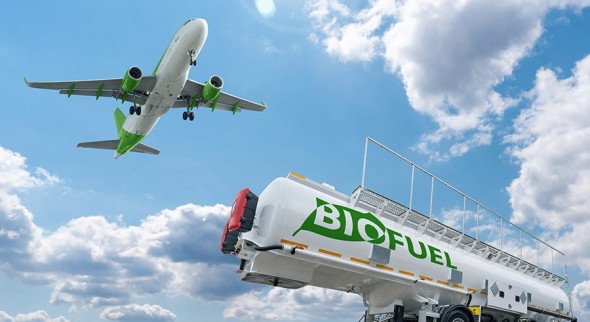NEWSLETTER
In Conversation: Holly Boyd-Boland, Virgin Atlantic


In the last few years, sustainable aviation fuel (SAF) has shot to the front of airlines priorities.
Earlier this month, Ryanair announced a new SAF partnership with Neste Holland and Cathay Pacific announced the launch of its new corporate SAF program.
It seems airlines are beginning to realize that it is critical to be making long-term SAF purchasing agreements now, due to the limited amount of fuel currently available and the underdevelopment of the infrastructure needed to develop it.
It is vital that airlines plan their SAF supply for the short term future as the demand for them to use it won’t be determined by whether they have access to it or not, but rather by government policy and corporate demand as part of their own emissions reductions goals.
Relying on the decrease of aviation emissions is a significant part of many governments’ emissions reduction strategies, and SAF is a large part of their strategy.
On April 12, the Biden government announced that biofuels are key to the US government’s targets to reduce its emissions by 20% by 2030, and made a renewed push for new tax credits for sustainable aviation fuel.
Austria Airlines has begun receiving SAF deliveries at Vienna International Airport from OMV as a result of a supply contract signed in 2021.
Due to the close proximity of the fuel production facility and the delivery point, the partnership, which has stated its intent to transform Austria into an innovation hub, is solidifying its distribution and production chain.
This highlights a unique opportunity that is being explored by few countries, due to feedstocks not being limited by location, SAF can be developed anywhere, and eventually, airlines will end up prioritizing SAF developed either within or near the airports they operate out of.
In a statement referring to the announcement earlier this month of Qantas Airways’ plans to reduce its emissions by 25% and boost its SAF fuel use to 10% by 2030, Qantas CEO Alan Joyce said, “It would be a shame if Qantas meets its 10% sustainable aviation fuel target in 2030 by buying offshore.”
The demand to purchase regionally is there, and governments are looking to support the development of SAF infrastructure.
Interestingly it looks like the product is in such high demand that what ordinarily would be a rat race to enter the market may rather be an even playing field with the choice over partnerships focusing on the region over other factors.
By SimpliFlying Sustainability Specialist, Hailey Findlay
Introducing The Sustainability In The Air Podcast, from SimpliFlying CEO, Shashank Nigam:
Carbon offsetting remains one of the few ways of flying net-zero today. But only 1% of travellers voluntarily offset their footprint. We ask tough questions on the latest podcast.
In a frank conversation with Dave Rouse and Michelle Noordermeer, I dive deep into how radical transparency helped CarbonClick deliver market-leading carbon offsetting programs to top airlines.
They open up about the mistrust around planting trees and how it can be overcome.
Finally, they share innovations in the field that make carbon offsetting possibly one of the only effective and scalable methods of achieving carbon-neutral flight today.
P.S: Thanks to our partnership, we will plant a tree for every download of the podcast and 50 trees for every review! So, go ahead and do the right thing 🙂
h/t to Ed Sims for making this collaboration possible!
Positive story of the day
Airbus proves once again that commercial flight using only sustainable aviation fuel is possible (Lexology)
Turkish Airlines unveils sustainability-themed aircraft (Business Traveller)
Sustainability in regional aviation: Air Nostrum hosted a forum together with the European Regions Airline Association (ERA) (Aviacionline)
easyJet announces plans to accelerate adoption of hydrogen in aviation (Future Travel Experience)
Lufthansa integrates ‘carbon neutral’ options into booking process (BTN Europe)
Alaska Airlines’ sustainability report champions climate action, social impact, commitment to people and greener travel (Alaska Airlines)
Heathrow Is The Largest Major Airport User Of Sustainable Aviation Fuel (Simple Flying)
© 2022 SimpliFlying Pte. Ltd.